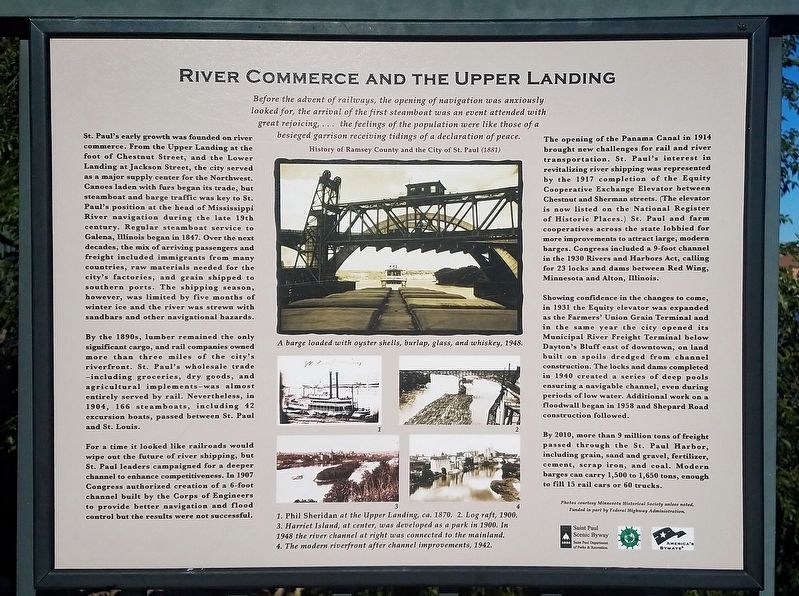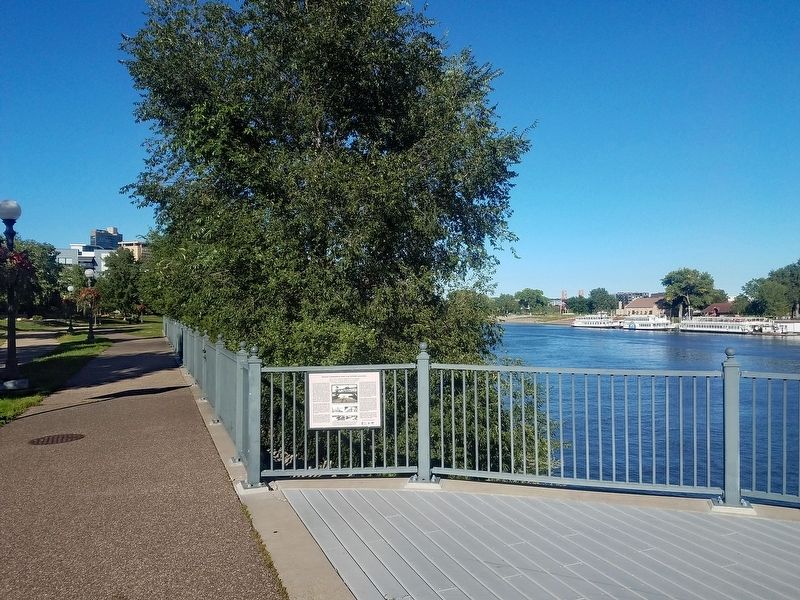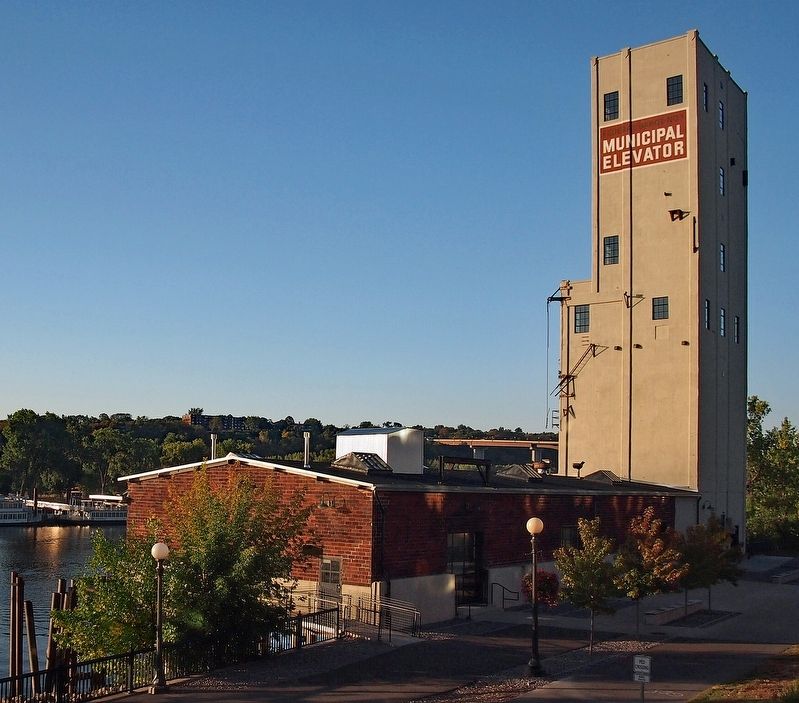West Seventh - Fort Road in Saint Paul in Ramsey County, Minnesota — The American Midwest (Upper Plains)
River Commerce and the Upper Landing
Before the advent of railways, the opening of navigation was anxiously looked for, the arrival of the first steamboat was an event attended with great rejoicing, … the feelings of the population were like those of a besieged garrison receiving tidings of a declaration of peace.
History of Ramsey County and the City of St. Paul (1881)
St. Paul's early growth was founded on river commerce. From the Upper Landing at the foot of Chestnut Street, and the Lower Landing at Jackson Street, the city served as a major supply center for the Northwest. Canoes laden with furs began its trade, but steamboat and barge traffic was key to St. Paul's position at the head of Mississippi River navigation during the late 19th century. Regular steamboat service to Galena, Illinois began in 1847. Over the next decades, the mix of arriving passengers and freight included immigrants from many countries, raw materials needed for the city's factories, and grain shipped to southern ports. The shipping season, however, was limited by five months of winter ice and the river was strewn with sandbars and other navigational hazards.
By the 1890s, lumber remained the only significant cargo, and rail companies owned more than three miles of the city's riverfront. St. Paul's wholesale trade–including groceries, dry goods, and agricultural implements—was almost entirely served by rail. Nevertheless, in 1904, 166 steamboats, including 42 excursion boats, passed between St. Paul and St. Louis.
For a time it looked like railroads would wipe out the future of river shipping, but St. Paul leaders campaigned for a deeper channel to enhance competitiveness. In 1907 Congress authorized creation of a 6-foot channel built by the Corps of Engineers to provide better navigation and flood control but the results were not successful.
The opening of the Panama Canal in 1914 brought new challenges for rail and river transportation. St. Paul's interest in revitalizing river shipping was represented by the 1917 completion of the Equity Cooperative Exchange Elevator between Chestnut and Sherman streets. (The elevator is now listed on the National Register of Historic Places.) St. Paul and farm cooperatives across the state lobbied for more improvements to attract large, modern barges. Congress included a 9-foot channel in the 1930 Rivers and Harbors Act, calling for 23 locks and dams between Red Wing, Minnesota and Alton, Illinois.
Showing confidence in the changes to come, in 1931 the Equity elevator was expanded as the Farmers' Union Grain Terminal and in the same year the city opened its Municipal River Freight Terminal below Dayton's
Bluff east of downtown, on land built on spoils dredged from channel construction. The locks and dams completed in 1940 created a series of deep pools ensuring a navigable channel, even during periods of low water. Additional work on a floodwall began in 1958 and Shepard Road construction followed.
By 2010, more than 9 million tons of freight passed through the St. Paul Harbor, including grain, sand and gravel, fertilizer, cement, scrap iron, and coal. Modern barges can carry 1,500 to 1,650 tons, enough to fill 15 rail cars or 60 trucks.
Topics. This historical marker is listed in these topic lists: Industry & Commerce • Waterways & Vessels. A significant historical year for this entry is 1847.
Location. 44° 56.229′ N, 93° 6.149′ W. Marker is in Saint Paul, Minnesota, in Ramsey County. It is in West Seventh - Fort Road. Marker is at the intersection of Mill Street and Washington Street, on the right when traveling north on Mill Street. Marker is at the downstream end of an overlook on the paved recreational paths along the Mississippi River, about halfway between the Smith Avenue High Bridge and the Saint Paul Municipal Grain Elevator. Touch for map. Marker is at or near this postal address: 120 Mill St, Saint Paul MN 55102, United States of America. Touch for directions.
Other nearby markers. At least 8 other markers are within walking distance of this marker. Welcome to the Saint Paul Municipal Grain Terminal (approx. 0.2 miles away); A River in Decline
(approx. 0.2 miles away); USS Saint Paul (CA-73) Anchor (approx. 0.2 miles away); Irvine Park / Irvine Park Historic District (approx. ¼ mile away); Saint Paul AMVETS Memorial (approx. 0.3 miles away); Alexander Ramsey House (approx. 0.3 miles away); Justus Ohage, M.D. (approx. 0.4 miles away); Freedom House Station 51 (approx. 0.4 miles away). Touch for a list and map of all markers in Saint Paul.
Credits. This page was last revised on February 12, 2023. It was originally submitted on December 29, 2022, by McGhiever of Minneapolis, Minnesota. This page has been viewed 226 times since then and 89 times this year. Photos: 1, 2, 3. submitted on December 29, 2022, by McGhiever of Minneapolis, Minnesota. • Devry Becker Jones was the editor who published this page.


